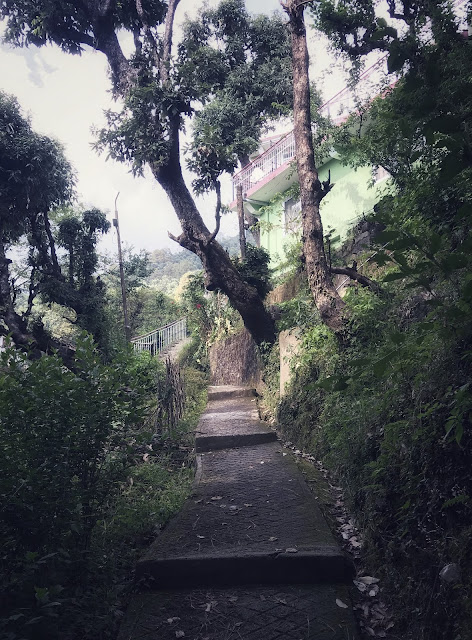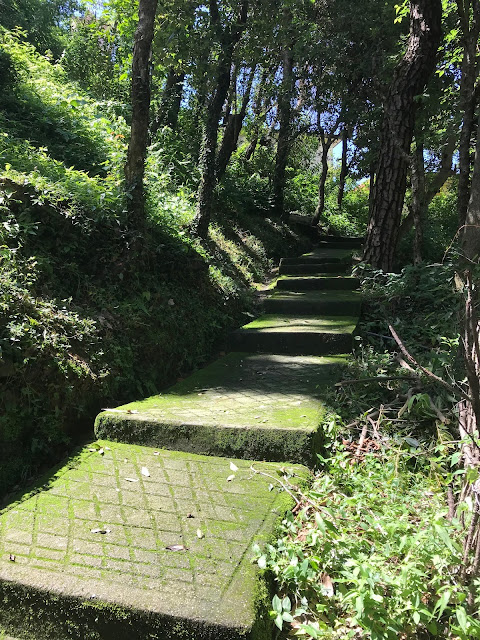When I was a little girl, an idli vendor used to come by every morning with a huge aluminium bucket full of steaming hot idlis and chilled coconut chutney. Each idli cost a rupee and it was served on a small banana leaf along with a generous portion of the chutney (on Sundays he would also bring masala dosa and vada, along with sambar). This was my favourite breakfast - and on countless days I would take this in my tiffin to school. On some days the kind vendor at school would pour some steaming hot sambar onto the idlis that I took from home - that was bliss!
Over the years, I've been pretty vocal about my idli-love. Idlis are my go-to comfort food, irrespective of the time of the day and I don't think I can ever have enough of these. One time I had idlis for four consecutive meals! There's something so magical about steaming hot idlis served with sambhar and chutney - but I can have these plain too.
However, I had never tried making these at home. This was primarily for two reasons - one, I always felt it was too much work to make the batter from scratch, especially for one person. Not that I had the right equipment needed to carry out the project either. The fact that idli needs a lot of skill didn't help either. Plus there were always enough delivery services in the neighborhood. My mom never made rice idlis at home. She makes amazing rava idlis, so I recently tried to give it a shot in my make-shift idli steamer (a covered pan with a small steel ring placed at the base and a bowl half full of batter placed on top of it). That turned out to be quite alright. I guess that's how I gained enough confidence to try and make rice idlis from scratch. The fact that I haven't found a good idli place in the neighborhood yet may have been an important consideration in this decision.
I turned to Adith for help. Adith is my friend from Chennai who is aware of my love for idlis. Adith's mom gave him broad directions for the recipe, which he sent to me. The thing is, Adith doesn't cook either, so it was only after a couple of back and forths that I was able to get enough information to get started. I ordered parboiled rice on Amazon (none of the local stores here stock it) and waited for about 2 weeks for it to arrive. I also ordered a mixer grinder since I didn't own any. Yes, all this to be able to make idlis at home.
I used the recipe to make the first batch of batter, which I steamed to make idlis. The result was hard idlis, which also seemed like they were undercooked. I was heartbroken! How could have I expected to make perfectly fluffy idlis at the first attempt? Adith didn't know the solution to this, but he consoled me by saying that it is common for people to not get it right even if they've been making it for ages. So if I got hard idlis in the first attempt, that was actually good progress! I didn't have the heart to steam any more idlis with the batter, so I tried making dosas out of it. However, the texture of the dosa was way too grainy - that's how I realized that the batter was way too coarse. I mentioned this randomly to a wise, elderly gentleman (I didn't know he had any knowledge about cooking), and he said that the reason that the idlis were hard could be because the batter hadn't fermented enough. He said his wife usually adds a little Eno before steaming idlis.
So once I had recovered from my heartbreak, I made a new batch of batter. This time I ground the rice a little more before adding it to the dal paste. And I left it overnight in the container to ferment. Before steaming I added a little Eno and also about half a teaspoon of ghee (a tip I got from Upasana, another friend who is heavily invested in my idli-making endeavors). I steamed the first portion for about ten minutes, which resulted in undercooked idlis (the top was fine, but the bottom was definitely undercooked). But hey, at least it wasn't hard! After a bunch of trial and errors, I discovered that fifteen mins is what it takes, after which you need to leave it in the pan for another 5 minutes and then take it out and let it sit for another 5 minutes. I swear it takes all the restraint in my body to not take it out of the steamer and eat it immediately (obviously resulting in undercooked idlis)!
I still haven't received perfection though. I think I need a shallower bowl/ plate which I can use in the pan (the current utensil that I use is a little deep). I also need to figure out how to ferment the batter more - I used the last bit of the batter this morning (I made it four days ago) and it seemed like the fermentation had finally happened properly. But I do know that the batter recipe that Adith's mom shared is pretty much spot on. So if you're curious, here it is:
Take 3 cups of rice (Adith recommends parboiled rice for this) and add 1/4 methi (fenugreek seeds) to it. Soak this in a vessel overnight. Also soak 1/2 cup urad dal overnight, in a separate vessel (minimum 3 hours). I found out that if you wash both these things before soaking, that works out to be better.
The grinding process will depend on how quickly you want to use the batter. If you want to use the batter immeditely, drain the water, add a glass of buttermilk and salt and grind everything together. However, if you're not in a rush, you can follow the longer method (this is what I've been working with):
Grind rice (leave the methi in) with a little water into a coarse batter ( it should have a slightly grainy texture). While you grind the rice, leave the dal in the fridge to chill. Once the rice is ground, keep it aside.
Grind the dal separately - this needs to be a fine, fluffy batter. Once this is done, mix the rice and dal together and add salt (the salt and methi will help with fermentation). Leave it overnight in a closed container for fermentation (keep it outside, not in the refrigerator). This batter can be stored in the refrigerator for 3-4 days.
I haven't had enough time to work out the sambar recipe yet, so that'd have to be shared in a separate post. I've mostly been devouring the idlis that I've made this week with some hummus (!), which has become a staple now. I do temper it with mustard seeds and curry leaves so that it feels adequately chutney-like! I'm not particularly proud, but in case you're wondering what my work-in-progress idli looks like, here's the picture:




